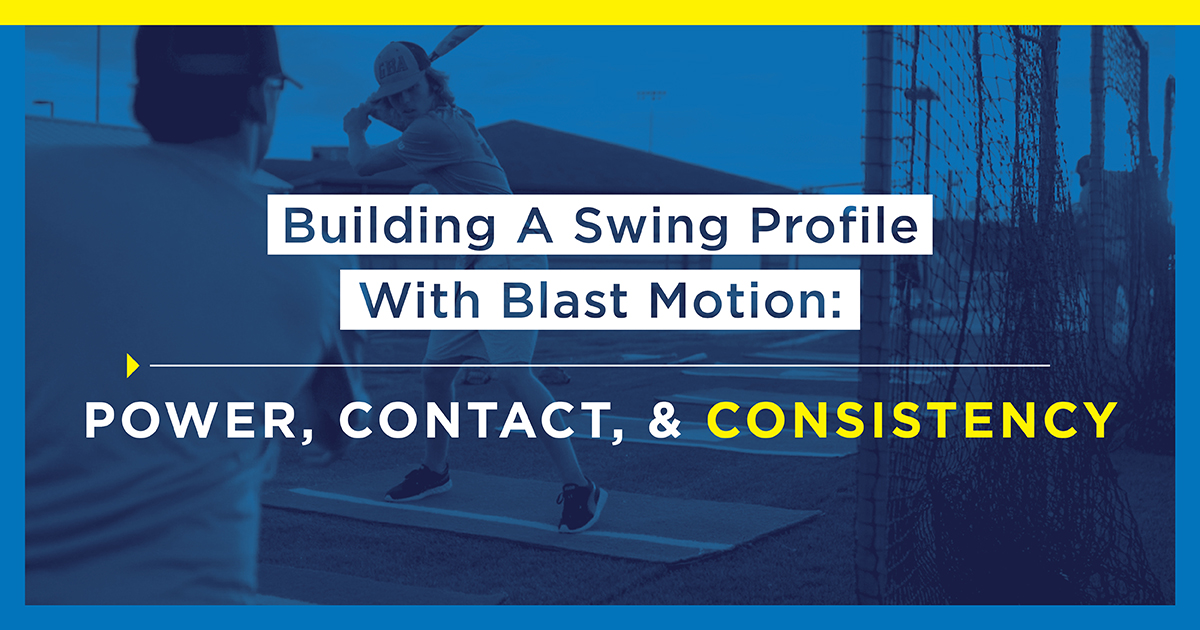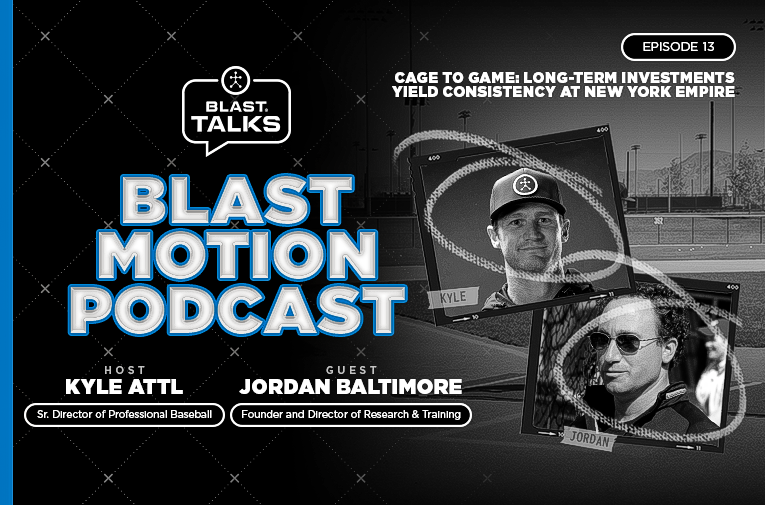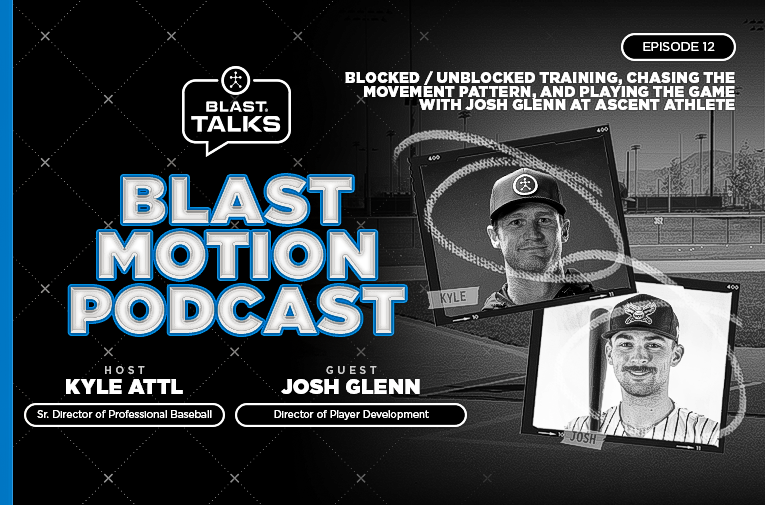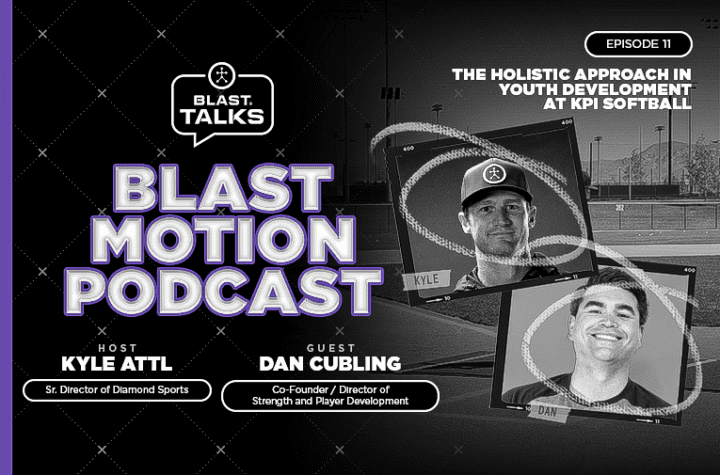
Power, Contact, Consistency
Written By: Joe Tourville – Key Account Manager – Event Partners
To create an overall player profile, you need to properly evaluate three main components: power, contact and consistency. We explain each in detail:
Power Profile
From an assessment standpoint, a hitter’s bat speed is their floor (raw power) and their rotational acceleration is their ceiling (power efficiency). A hitter can perform in high school with high bat speed and lower rotational acceleration, but that skill set is generally not scalable to higher levels because the hitter cannot build that bat speed quick enough to face better pitching.
Bat speed + rotational acceleration = dynamic power, which is the ability to hit for power without sacrificing a high number of swings and misses.
Contact Profile
Evaluating a hitter for their contact profile relies on two factors:
- Swing path—If it’s smooth like an ellipse or record player, the hitter’s on-plane efficiency will be 70% or above.
- Swing direction—The hitter wants to have the direction of their swing (bat through the hitting zone) slightly positive to match the incoming pitch. We’re looking for a range of +5° to +20° as the target (and making sure we’re looking at a strong sample size). Based on a hitter’s profile (power hitter, contact hitter or hybrid), they should have an attack angle range to match their desired ball flight, not the launch angle.
On-plane efficiency + attack angle = higher % of making contact.
Consistency Profile
You want to look at both early connection and connection at impact. Hitters at the highest level have consistent swing loads and a tight range of early connection values. Early connection is measured at the beginning of the violent part of the swing (start of downswing), after the load. Hitters want consistency and around 90 degrees for all pitch locations.
Ninety degrees is the strongest angle we can create, like building the foundation of a house. Hitters want to be around 90 degrees at impact for all pitch locations, and use their bigger muscles to adjust to pitch locations, rather than their hands.
Early connection (around 90 degrees) + connection at impact (around 90 degrees) = low maintenance swing.

WIN Reality Acquires Blast Motion
WIN Reality Acquires Blast Motion: A New Era in Swing Development AUSTIN, TX June 23, 2025. WIN Reality, the leading virtual reality training and AI-powered

Blast Motion Podcast Episode 13: Cage to Game: Long-Term Investments Yield Consistency at NY Empire
PREVIEW In Episode 13, Sr. Director of Professional Baseball Kyle Attl is joined by Founder and Director of Research & Training at New York Empire

Blast Motion Podcast Episode 12: Blocked/Unblocked Training, Movement Patterns & Playing the Game
PREVIEW In Episode 12, Sr. Director of Professional Baseball Kyle Attl and Josh Glenn, Director of Player Development at Ascent Athlete, talk blocked / unblocked training,













